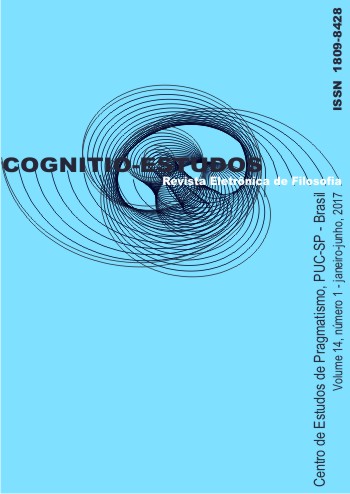A pragmatic form of cinema: Deleuze through Peirce and Bergson
DOI:
https://doi.org/10.23925/1809-8428.2017v14i1p118-129Keywords:
Cinema. Movement-image. Time-image. Deleuze. Peirce. Bergson. Audience. Pragmatism. Time. Movement. Action. Pragmatistic cinema.Abstract
In his two essays on Cinema, Movement-Image (1983) and Time-Image (1985), Gilles Deleuze analizes cinematographic images re-elaborating the general classification of signs made by Charles Sanders Peirce. His explicit intention in film analysis is to make a taxonomy of its objects. But Deleuze’s references to the father of Pragmatism and to Henry Bergson’s Matiére et Mémoire might hide another implicit intention: an attempt to use the cinema as a pragmatic tool. Peirce’s correlative signs, as well as Bergson’s overcoming of the opposition between movement as the external physical reality and image as the psychic reality of consciousness, help Deleuze to build a pragmatistic cinema that can translate the truth into a pragmatic way using the audience as medium. Therefore in his two essays about cinema Deleuze does not only work on a philosophical translation of films, nor on a cinematographic translation of theoretical concepts. He does not subordinate images to thoughts, but he builds indeed a place where thoughts and images work in mutual correlation. Especially through his first essay, the one about the movement-image, he builds a tool that all along the present article we will call pragmatistic cinema. So the pragmatistic argument that the meaning of a linguistic proposition can identify with a set of practical consequences coming from its acceptance, can work at the same time on the meaning of a cinematographic image: as well as the first, the latter represents the truth so to offer it to the experience and the existential activity of a subject. It is the audience: not the passive subject who contemplates a preordained reality or just a percipient subject who feels external sensitive objects. In front of a pragmatistic cinema, audience becomes an active subject that works on a process of active intervention in reality.

